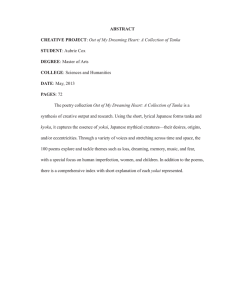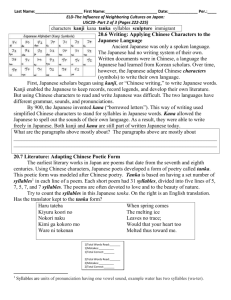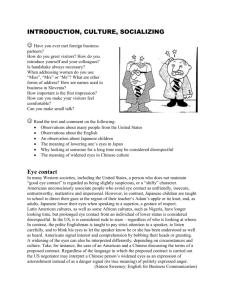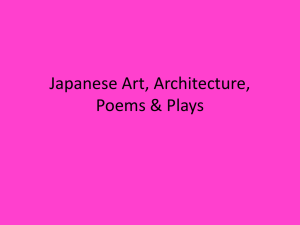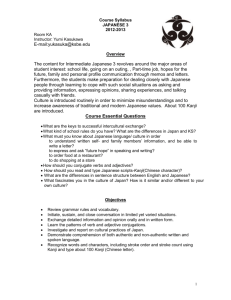File - MrPadilla.net
advertisement
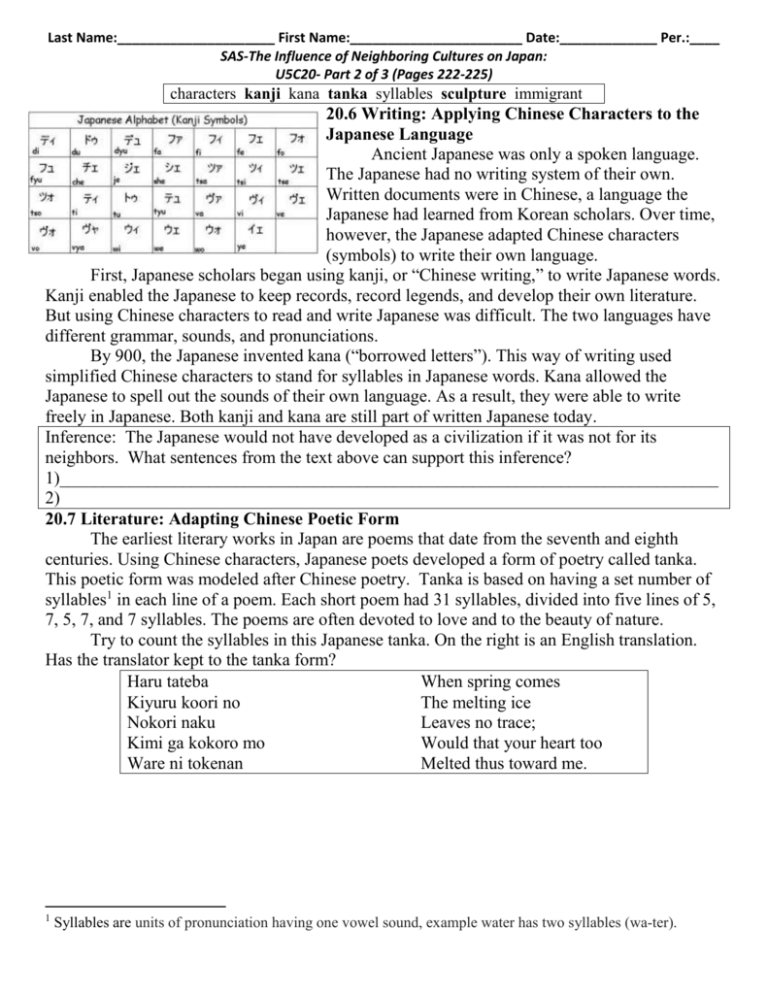
Last Name:_____________________ First Name:_______________________ Date:_____________ Per.:____ SAS-The Influence of Neighboring Cultures on Japan: U5C20- Part 2 of 3 (Pages 222-225) characters kanji kana tanka syllables sculpture immigrant 20.6 Writing: Applying Chinese Characters to the Japanese Language Ancient Japanese was only a spoken language. The Japanese had no writing system of their own. Written documents were in Chinese, a language the Japanese had learned from Korean scholars. Over time, however, the Japanese adapted Chinese characters (symbols) to write their own language. First, Japanese scholars began using kanji, or “Chinese writing,” to write Japanese words. Kanji enabled the Japanese to keep records, record legends, and develop their own literature. But using Chinese characters to read and write Japanese was difficult. The two languages have different grammar, sounds, and pronunciations. By 900, the Japanese invented kana (“borrowed letters”). This way of writing used simplified Chinese characters to stand for syllables in Japanese words. Kana allowed the Japanese to spell out the sounds of their own language. As a result, they were able to write freely in Japanese. Both kanji and kana are still part of written Japanese today. Inference: The Japanese would not have developed as a civilization if it was not for its neighbors. What sentences from the text above can support this inference? 1)___________________________________________________________________________ 2) 20.7 Literature: Adapting Chinese Poetic Form The earliest literary works in Japan are poems that date from the seventh and eighth centuries. Using Chinese characters, Japanese poets developed a form of poetry called tanka. This poetic form was modeled after Chinese poetry. Tanka is based on having a set number of syllables1 in each line of a poem. Each short poem had 31 syllables, divided into five lines of 5, 7, 5, 7, and 7 syllables. The poems are often devoted to love and to the beauty of nature. Try to count the syllables in this Japanese tanka. On the right is an English translation. Has the translator kept to the tanka form? Haru tateba When spring comes Kiyuru koori no The melting ice Nokori naku Leaves no trace; Kimi ga kokoro mo Would that your heart too Ware ni tokenan Melted thus toward me. 1 Syllables are units of pronunciation having one vowel sound, example water has two syllables (wa-ter). (Yes/No) the translator has (not kept/kept) the tanka form because_____________________ 20.8 Sculpture: Carving Techniques Travel to Japan from China and Korea Like Buddhism, new techniques and subjects of sculpture came to Japan from Korea and China. And like Buddhism, these sculptural ideas began their journey in India. Archeologists have found examples of early Japanese sculpture around burial mounds that date to the fourth and fifth centuries. The sculptures are clay figures of armored warriors, saddled horses, robed ladies, and objects like houses and boats. They were probably meant to accompany or protect the dead. Meanwhile, Buddhism was inspiring new subjects for sculpture on the Asian mainland. As these ideas moved east, sculptors’ techniques and materials gradually changed. From the middle of the sixth century to the middle of the seventh century, Chinese and Korean immigrants created most of Japan’s religious art. Japanese artists learned new techniques from them. In your own words, find the meaning of the words below: characters:_______________________________________________________________________ kanji:___________________________________________________________________________ kana:__________________________________________________________________________ tanka:__________________________________________________________________________ syllables:________________________________________________________________________ sculpture:________________________________________________________________________ immigrant:_______________________________________________________________________ Create your own tanka poem in the five lines below Examples of tanka poems "Pretty colored trees "A cool wind blows in "The dog likes to bark That are orange, red and yellow With a blanket of silence. His bark is loud for others In the Autumn air Straining to listen He is a cute dog An old barn by the water For those first few drops of rain, So people don't mind too much With a white fence around it." The storm begins in earnest." They sometimes come to pet him"
